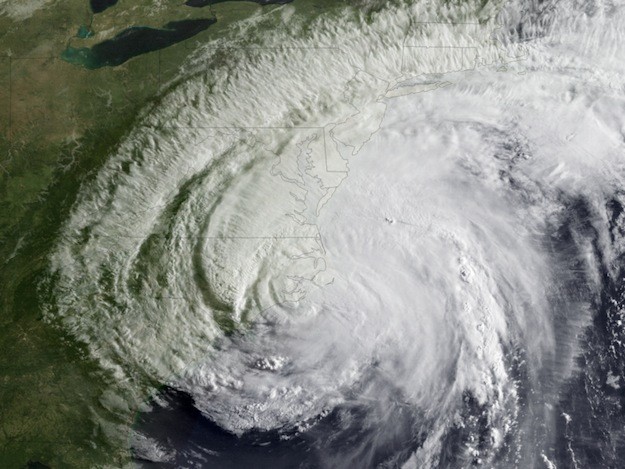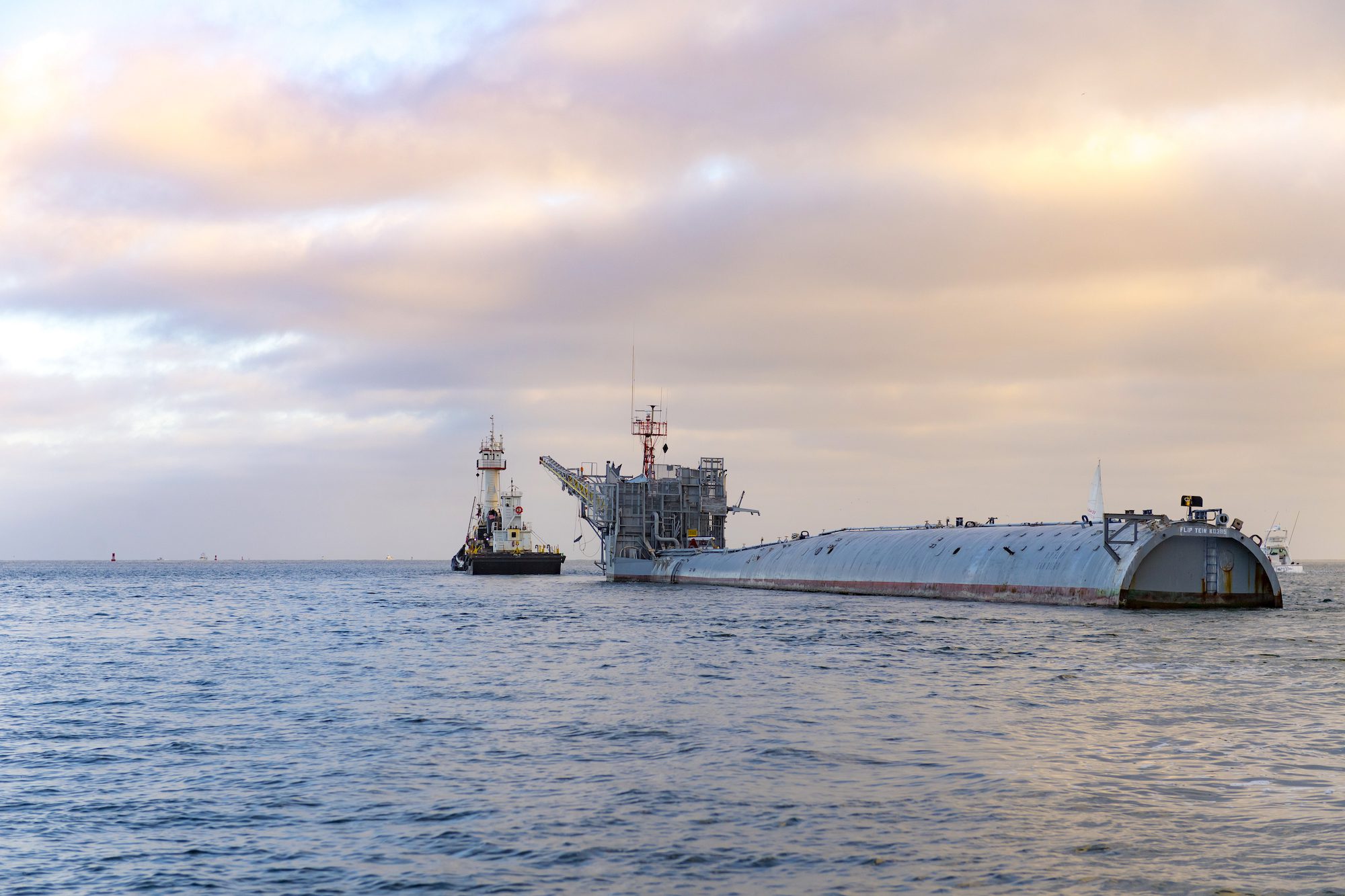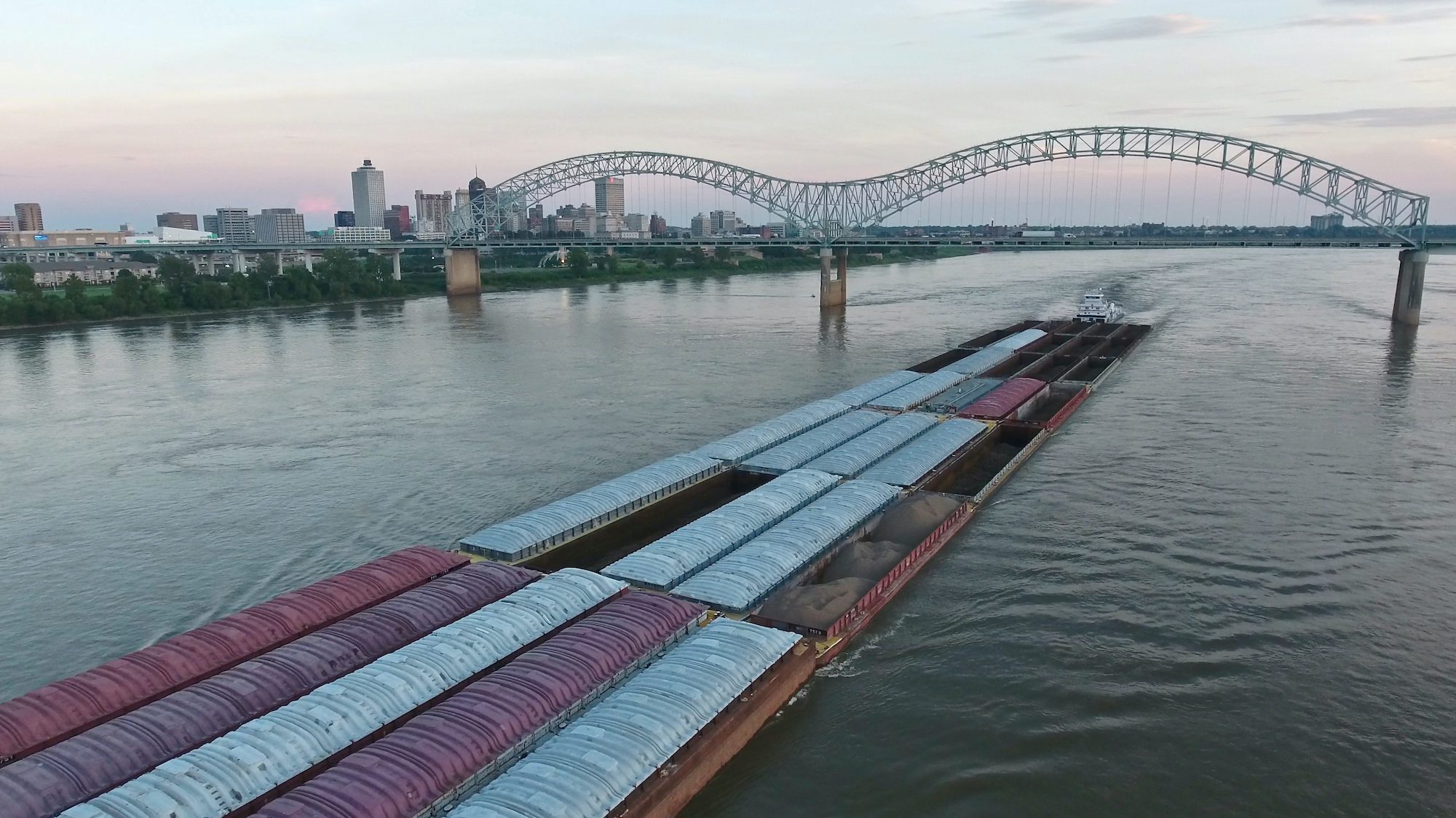
Image: NOAA
Weakened Irene Rakes Coast; Mammoth, Slow-Moving Storm Leaves a Sprawling Trail of Damage Far Inland
Hurricane Irene menaced the Eastern seaboard, pounding tens of millions of Americans with wind, rain and floods—but largely sparing New York after an unprecedented shutdown of the largest U.S. city ahead of the massive storm.
In New Jersey, the ocean surge and rainfall caused severe inland flooding. Gov. Chris Christie said damages there would total at least $1 billion and could reach “tens of billions of dollars.” Virginia’s governor called the blackout in his state its second-largest ever and warned that electricity might not be restored for a week.
Irene’s massive size and slow journey along 1,100 miles of U.S. coastline left an extraordinarily broad impact. At least 19 deaths were attributed to Irene as devastation ranged from North Carolina to Vermont. Toppled trees, fallen debris and flooding caused hundreds of roads to be closed over the weekend. Up and down the coast, some 2.4 million people evacuated.
As darkness fell on Sunday, Irene continued to wreak havoc. With the storm moving north, the number of power outages in Massachusetts eclipsed half a million, and dramatic flooding began in the Catskill Mountains and the Hudson River Valley. Officials reported heavy flooding in central Vermont, and water continued to rise on some areas of New Jersey.
Between 15 and 20 heating-oil trucks were pushed into the Ramapo River after a 9-inch torrent of rain fell near Tuxedo Park, N.Y., and the stream overflowed. “An environmental disaster is floating down the river,” said Mayor Tom Wilson in an interview. “There’s fuel spilling into the river. … It’s everywhere.”
As the storm struck near New York City on Sunday, high winds and torrential rains ripped through nearby beach towns in New Jersey and Long Island and triggered inland flooding and power outages for hundreds of thousands of residents. Power was cut off for as many as four million people up and down the East Coast. In Philadelphia, Mayor Michael Nutter said his city faced historic rising waters.
In New York City itself, however, fears of widespread catastrophe went largely unrealized. By Sunday morning, tourists trickled back into a mostly abandoned Times Square, and New Yorkers were clamoring for the subway system to be turned back on.
As Irene traveled from the Caribbean to the U.S., the storm tripled in width to more than 600 miles, engulfing areas inhabited by more than 60 million people. Total losses are still being calculated, but due to its extensive range, the damage could total in the billions of dollars. By the time Irene neared Canada late Sunday night, it was downgraded to a post-tropical storm.
Water had risen nearly 10 feet in the creek behind the home of Mick Hayes, a plumber in Mays Landing, N.J. His power went out Saturday evening. When the started flooding, he rigged a series of pumps, powered by a generator in the back of his pickup truck, in hopes of diverting a chest-high torrent to the other side of a nearby road.
“I’ve got pumps on top of pumps on top of pumps,” said Mr. Hayes. But the water continued to rise. “You can’t stop mother nature. It is what it is.”
In New York Harbor, Staten Island—which helped buffer Manhattan from the worst of the storm—lost power in some areas and saw heavy flooding. Some residents worked through the night to fight the water. To the dismay of his pregnant wife, Kevin Justesen, a 41-year-old teacher, climbed onto his roof during the storm to cover a leaking skylight. “My wife told me if I do that again, we’ll be getting divorced,” he said Sunday.
Long Island, home to more than 2.8 million people, suffered power outages, flooding in many low-lying areas and waves that pummeled coastal towns. But damage was less than expected. “We’re somewhat relieved,” said Islip Town Supervisor Phil Nolan.
After blowing through New York, Irene continued up the Hudson Valley, no longer a hurricane but still spawning intense rain, tornadoes and unpredictable flooding across a vast area.
In New England, the Berkshire Mountains community of North Adams, Mass., was forced to close more than a dozen roads in and out of the town as Hoosic River rose dramatically. “This has pretty much put a stranglehold on the city,” said Michael Cozzaglio, police director for the city of 15,000.
The hurricane carried its most powerful punch in North Carolina, when it struck land on Saturday near Cape Lookout, N.C., on the southern tip of the Outer Banks. Parts of the state had storm surges of as much as eight feet, and at least five people were killed in the state. More than 450,000 residents were without electricity, according to emergency officials. One estimate put damages in North Carolina at more than $400 million.
The movement of goods in a large portion of the U.S. also came to a virtual standstill, as transport companies such as FedEx Corp., United Parcel Service Inc. and major railroads like CSX Corp. and Amtrak shut down services before and during the storm. Connecticut Gov. Dannel P. Malloy briefly banned tractor-trailers from roads in the state.
The New York Stock Exchange—which could have been flooded if some of the more dire predictions for Irene had come true—announced it would open as normal on Monday.
Officials in New York City and other areas took aggressive steps before the storm to move residents out of vulnerable areas and fortify key infrastructure such as the subway system and power grid. In serial press conferences, leaders including New York Mayor Michael Bloomberg and Gov. Christie hammered that residents should leave threatened areas and issued dire warnings.
In New York, Mr. Bloomberg issued mandatory preemptive evacuations of 370,000 people from wide swaths of the city, a move no mayor in recent recollection had previously taken.
New York subways, area airports and trains in the region all shut down by midday Saturday. Airlines canceled more than 10,000 flights in the region. Restaurants shuttered early. With no mass transit available, thousands of workers couldn’t reach their jobs, prompting more businesses to close down. By nightfall Saturday, the city was eerily quiet.
Thousands of New Yorkers took shelter in emergency centers established by the city, the American Red Cross and other humanitarian groups. But far more simply stayed home to wait out the weather. Cory Stambler and Dara Bloomfield, both 22 years old, hosted a marathon viewing of disaster films in her Upper West Side apartment and ate all her perishable food in case the power went out.
On Beach 133rd St. on the Rockaway peninsula in Queens, longtime residents were counting on a five-foot-high wall of rough concrete facing Jamaica Bay at the end of their block.
“You don’t have to worry about the high water,” Dennis Cummins was saying at 9 a.m. Mr. Cummins, a retired firefighter, 71 years old, was standing out on the sidewalk in front of his house with a bunch of neighbors, all of them worrying about the high water.
“It’s not coming over that wall,” Mr. Cummins said.
Geni Smilowitz, 69, hustling into an SUV with her 75 year-old husband, Martin, on Saturday said she still remembered Hurricane Donna, which roared into the neighborhood with 90-mile-per-hour winds and massive flooding in September 1960.
“This one is worse,” she worried Saturday as the storm was bearing down. “I have a premonition. So we’re going to my son’s house.”
By the time the rain came to the neighborhood Saturday evening, the block was mostly empty, but Mr. Cummins and his wife stayed. Later, he walked down to the wall.
“The water was three feet below the top,” he said. “Absolutely nothing came over that wall.”
Jerry A. DiColo, Jennifer Levitz, Erica Orden and Andrew Grossman contributed to this article.
(c) 2011 Dow Jones & Company, Inc.

 Join The Club
Join The Club











